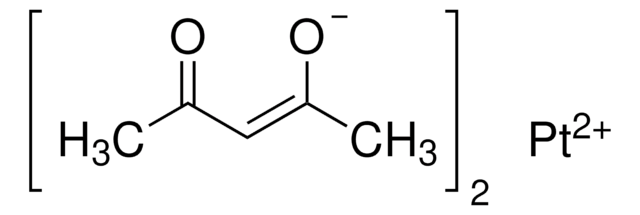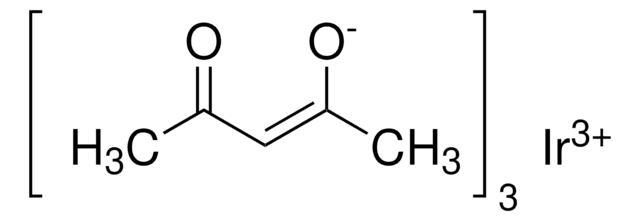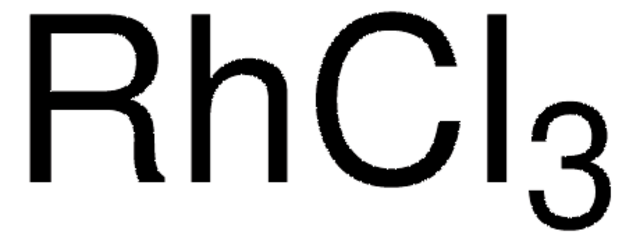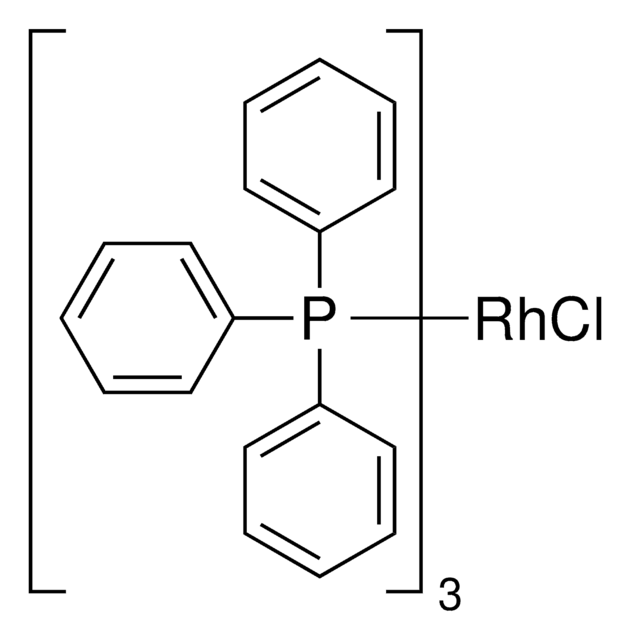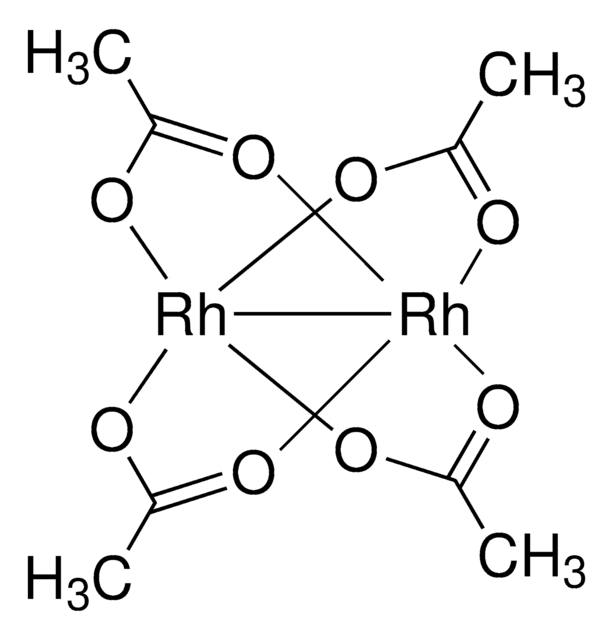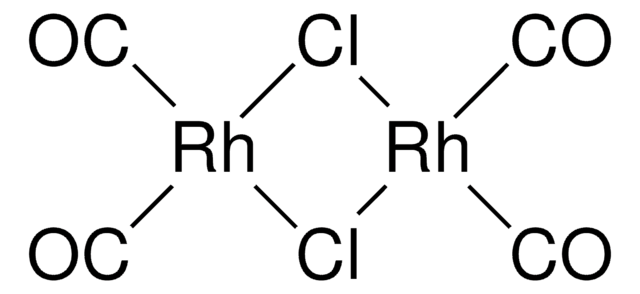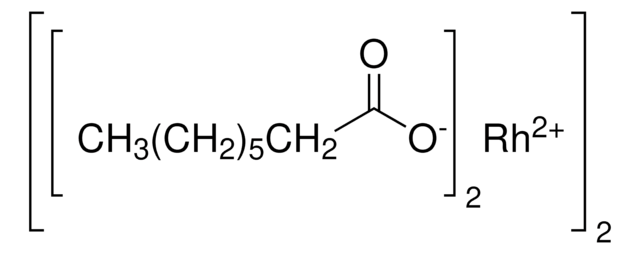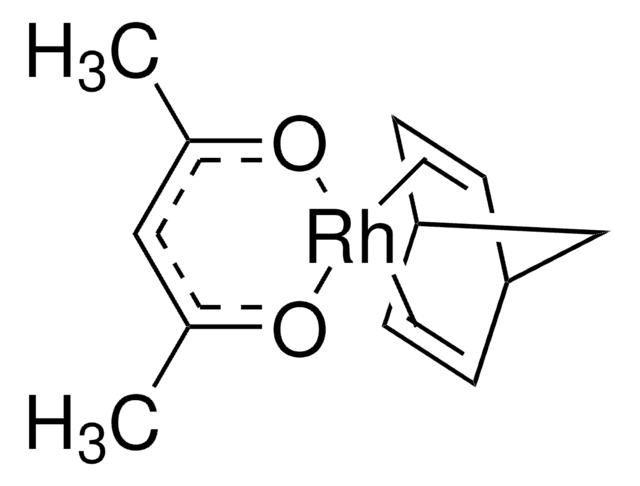282774
Rhodium(III) acetylacetonate
97%
Synonyme(s) :
2,4-Pentanedione rhodium(III) derivative, Rh(acac)3
About This Item
Produits recommandés
Niveau de qualité
Essai
97%
Forme
solid
Pertinence de la réaction
reagent type: catalyst
Pf
263-264 °C (lit.)
Chaîne SMILES
CC(=O)\C=C(/C)O[Rh](O\C(C)=C\C(C)=O)O\C(C)=C\C(C)=O
InChI
1S/3C5H8O2.Rh/c3*1-4(6)3-5(2)7;/h3*3,6H,1-2H3;/q;;;+3/p-3/b3*4-3+;
Clé InChI
DGOINFUDFBWCMX-MUCWUPSWSA-K
Description générale
Application
- As a precursor to synthesize Rh nanocrystals with catalytic activities.
- As an efficient catalyst for the α-alkylation of ketones, β-alkylation of secondary alcohols, and the alkylation of amines with primary alcohols.
- To prepare highly phosphorescent complexes for organic light-emitting devices.
- To synthesize the Rh2P NCs supported on carbon (Rh2P/C) by a one-step solvothermal method via a direct reaction between Rh(acac)3 and tri-n-octylphosphine (TOP). The resultant electrocatalyst exhibited remarkable performance for both the hydrogen evolution reaction and the oxygen evolution reaction, surpassing the capabilities of Rh/C and Pt/C catalysts for water splitting .
- To prepare Single-atom Rh/N-doped carbon electrocatalyst for the oxidation of formic acid.
- To synthesize Pt–Rh NWs as highly efficient electrocatalysts toward ethanol oxidation reaction (EOR) for Direct ethanol fuel cells. The electrocatalyst demonstrated improved catalytic activities, primarily attributed to the presence of Rh, which enhances its ability to resist poisoning.
Mention d'avertissement
Warning
Mentions de danger
Classification des risques
Acute Tox. 4 Dermal - Acute Tox. 4 Inhalation - Acute Tox. 4 Oral - Eye Irrit. 2 - Repr. 2 - Skin Irrit. 2 - STOT SE 3
Organes cibles
Respiratory system
Code de la classe de stockage
11 - Combustible Solids
Classe de danger pour l'eau (WGK)
WGK 3
Point d'éclair (°F)
Not applicable
Point d'éclair (°C)
Not applicable
Équipement de protection individuelle
dust mask type N95 (US), Eyeshields, Gloves
Faites votre choix parmi les versions les plus récentes :
Déjà en possession de ce produit ?
Retrouvez la documentation relative aux produits que vous avez récemment achetés dans la Bibliothèque de documents.
Les clients ont également consulté
Notre équipe de scientifiques dispose d'une expérience dans tous les secteurs de la recherche, notamment en sciences de la vie, science des matériaux, synthèse chimique, chromatographie, analyse et dans de nombreux autres domaines..
Contacter notre Service technique


